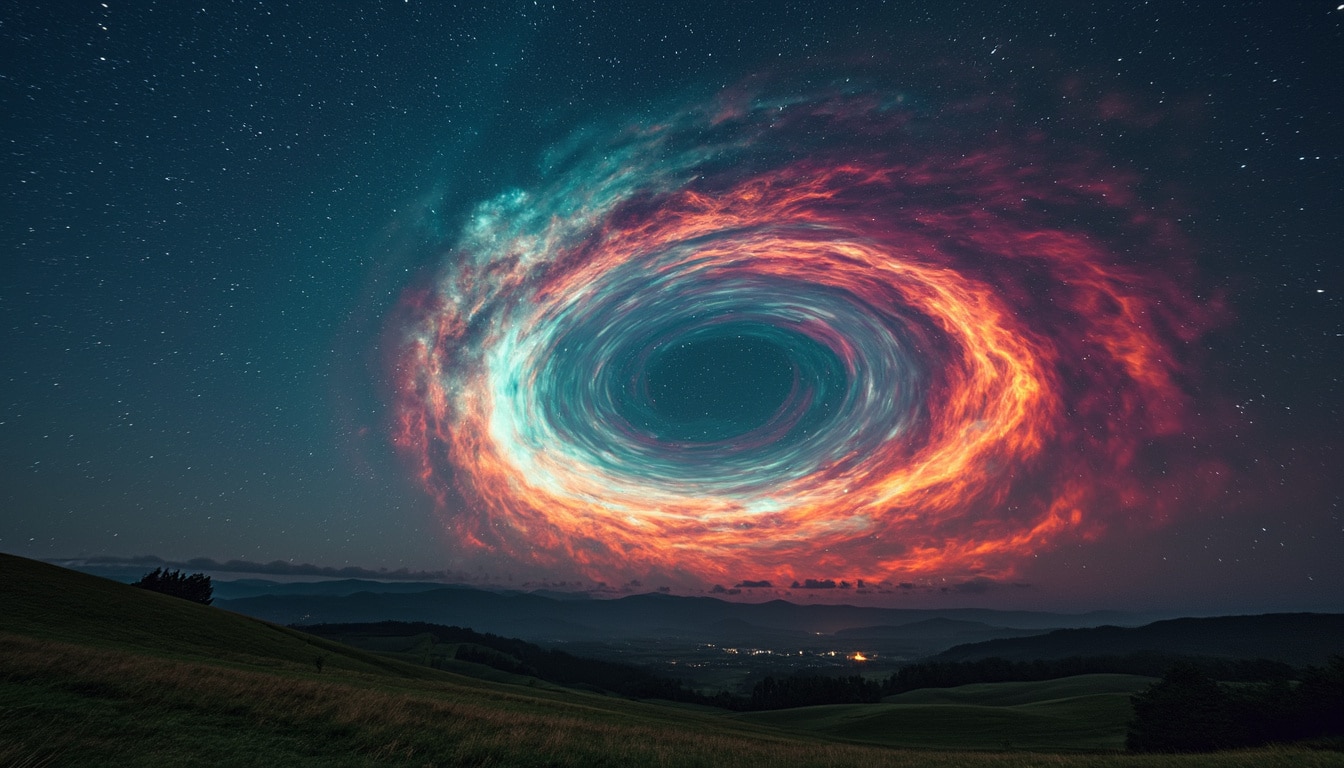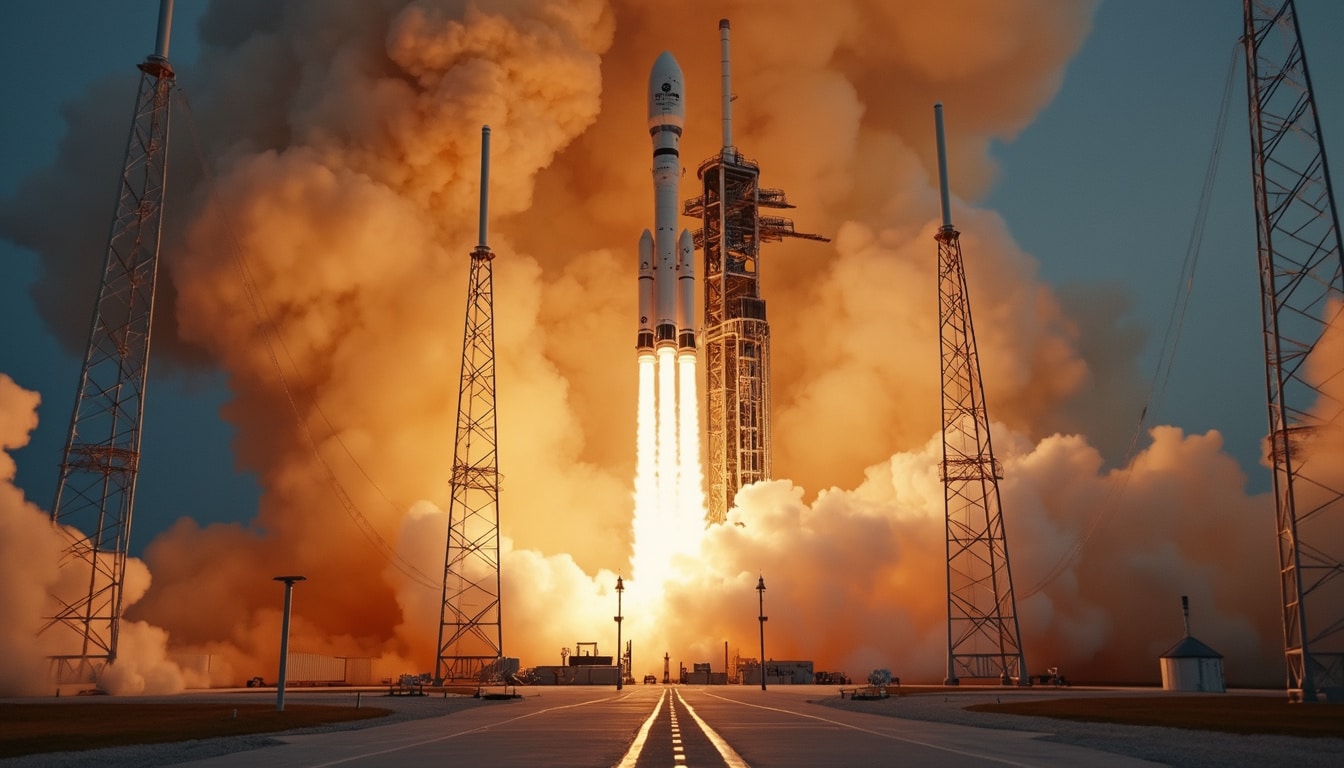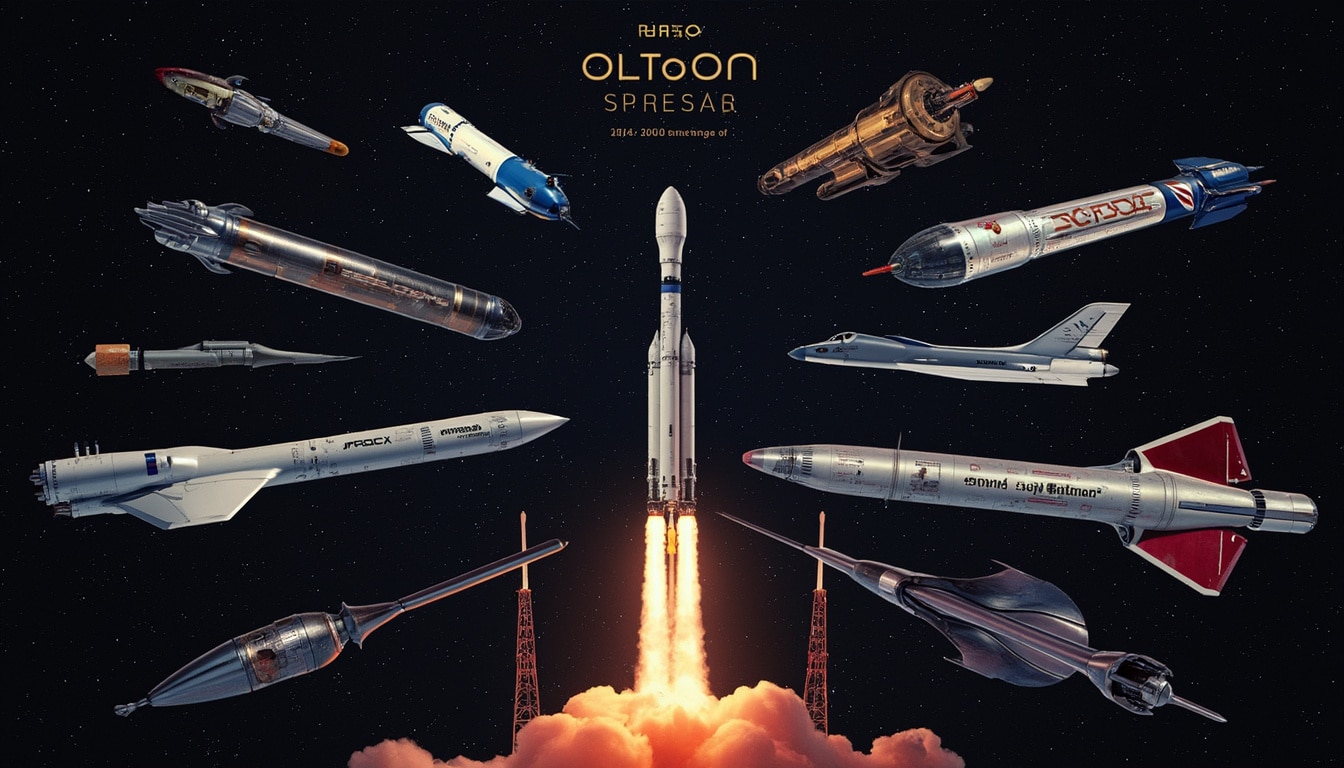A remarkable event unfolded in the skies above Wales, astonishing locals with a luminous spiral that appeared during the night. This striking display is linked to a recent rocket launch conducted by Elon Musk’s SpaceX, which took place over 4,000 miles away at Cape Canaveral, Florida. As residents gazed upwards on the evening of March 24, 2025, they were treated to a breathtaking spectacle, a glowing spiral that captivated the imaginations of many. The incident not only sparked discussions in the Welsh region but also garnered attention across various parts of Europe, including Greater Manchester, Yorkshire, and even up to Denmark and Italy.
The celestial wonder was confirmed to be the result of the Falcon 9 rocket launch, which aimed to deploy a National Reconnaissance Office (NRO) satellite. This launch marked another milestone for SpaceX, showcasing its trailblazing role in the space industry amidst competition from Boeing, Blue Origin, and others. Witnesses reported seeing the spiral phenomenon at approximately 8 PM, as the rocket’s frozen exhaust plume spiraled and reflected sunlight in the atmosphere. Astronomers like Allan Trow noted the rarity of such occurrences, making this event one for the books for both enthusiasts and curious observers alike.

The Science Behind the Spiral
The phenomenon that graced the Welsh sky can be attributed to the SpaceX Falcon 9 rocket launch. The rocket, known for its reusable technology, performed a key mission by deploying a spy satellite for the NRO, which is tasked with ensuring national security through space-based intelligence. The launch took place in the afternoon, and within hours, observers in Wales were treated to a dazzling display, confirming the connection between the launch and the resulting visual effect.
The spiral was created as the rocket’s frozen exhaust started to expand and freeze upon reaching the stratosphere, where it created a visual spectacle that can resemble a spiral galaxy. The sunlight striking the frozen particles resulted in the glowing effect that captivated those who witnessed it. This stunning event hearkens back to previous memorable instances, such as the infamous “Norway spiral,” which was also linked to a rocket launch but has taken its place in the annals of skywatching phenomena.
The Role of Reusable Rockets in Space Exploration
SpaceX’s approach to reusable rocketry has revolutionized the aerospace industry, providing a more cost-effective and efficient means of reaching space than traditional methods. The Falcon 9 rocket, which is designed to return partway to Earth after completing its mission, exemplifies this shift toward sustainability. The first stage’s successful return allows it to be refurbished and reused for subsequent launches, significantly reducing the cost of accessing space.
In an era where companies like Virgin Galactic, Rocket Lab, and Sierra Nevada Corporation are vying for a stake in the burgeoning space industry, the focus on environmental impact and economic sustainability has become a prevailing theme. Following the Falcon 9 launch, various reports highlighted its success, emphasizing the need for innovation as space exploration endeavors continue to grow.
With the increasing number of launches, particularly those dealing with projects like Starlink, a satellite internet constellation, the collaboration between NASA and SpaceX has become vital. Together, they aim to enhance connectivity and revolutionize internet accessibility globally, which can aid in various sectors from education to disaster response.

Public Reaction to the Welsh Spiral
The spiral’s appearance elicited a whirlwind of emotions from the public. Many shared their astonishment and confusion on social media platforms, desiring answers about the extraordinary event. Although initially met with trepidation, due to its mysterious appearance, the spiral quickly became a topic of fascination and intrigue. The Met Office quickly explained that the spiral was likely a result of the rocket launch, reassuring the public that there was no cause for alarm.
Witness accounts described varying experiences as they looked up at the sky. Some enthusiasts had begun to regard themselves as experienced skywatchers, while others were merely passing observers drawn to the uncommon sight. One individual remarked on social media, “A strange bright light with swirls appeared tonight… it first seemed to come toward us and then moved away across the sky.” This sentiment encapsulated the shared wonder that such celestial events inspire.
The Impact of Social Media on Astronomy
With the rise of social media platforms, the sharing of astronomical events has taken on a new dimension. Platforms like Twitter, Instagram, and TikTok have made it possible for individuals to instantly share their experiences, leading to a global dialogue around occurrences like the Welsh spiral. People from diverse backgrounds can connect over shared interests, and videos or photos of celestial events can quickly go viral. In the case of the spiral event, the #WelshSpiral became a trending topic, uniting enthusiasts and curious onlookers alike.
Moreover, scientists and educators have embraced social media as a tool for outreach, utilising it to engage the public in discussions about space exploration. Organizations like NASA employ social media campaigns to fuel interest in upcoming missions and educational initiatives, ensuring that the public remains informed and excited about advancements in space technology.
SpaceX and Its Competition
The success showcased by SpaceX through the recent launch reaffirms its position as a leader in the space industry, but it is not without formidable competitors. Companies like Lockheed Martin, Northrop Grumman, and Boeing are also notable players in the space arena. Their ongoing endeavors to develop innovative technologies and services challenge SpaceX to continuously advance and adapt to new heights.
Lockheed Martin has engaged in several partnerships with governmental organizations to further explore deep space missions, while Northrop Grumman is focusing on sustainable satellite technologies. Meanwhile, Boeing is awaiting its turn to showcase its capabilities through the Artemis program, targeting manned missions beyond low Earth orbit.
While the business of space exploration has become increasingly competitive, collaboration has emerged as a vital theme. For instance, as NASA continues its missions to establish a human presence on the Moon, it leverages support from multiple companies to achieve its objectives. The Artemis program promotes an inclusive approach, actively seeking partnerships across industries to foster technological advancements critical for long-duration missions.
The Role of Emerging Technologies
The landscape of space exploration is evolving with the rise of emerging technologies like artificial intelligence (AI), blockchain, and quantum computing. These innovations allow organizations to enhance efficiency and effectiveness in missions. AI aids in the analysis of vast datasets collected from space missions, while blockchain technology ensures secure and transparent communication between spacecraft and control centers on Earth.
Additionally, the race for the commercialization of space has propelled numerous startups to innovate in aerospace technology. The presence of nascent companies such as Blue Origin has disrupted traditional paradigms and challenged well-established entities. In this space race, mastering new technological applications remains paramount for success.

The Future of Space Exploration
The luminous spiral in the Welsh sky has reignited public interest in space exploration and reminded us of the breathtaking wonders that our universe holds. As technologies evolve and companies like SpaceX and their competitors revolutionize space travel, we can anticipate even more astonishing events in the future.
Looking forward, aspiring mariners of the cosmos are encouraged to marvel at the possibilities and join the conversation surrounding space technology. The exploration of Mars, the establishment of lunar bases, and the quest for extraterrestrial life remain uncharted territories ripe for discovery. The collaboration between private companies and governmental organizations stands as a beacon of hope for our ventures into the cosmos.
Substantial steps taken today may pave the way for future generations to build upon the achievements of the current pioneers of space exploration. The advancements in spacecraft design, propulsion systems, and satellite connectivity contribute to a new era of exploration, offering insights that will forever change how humanity views its place in the universe.
As we look towards the stars with anticipation, the day will come when the extraordinary becomes the ordinary. The wonders we can achieve through ingenuity and determination must inspire a collective quest for further exploration and understanding of our universe.




Leave a Reply